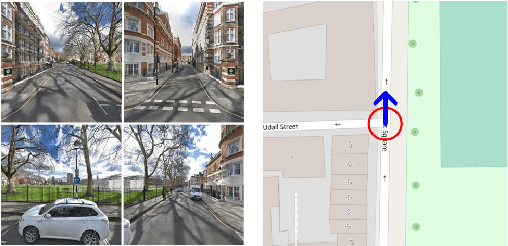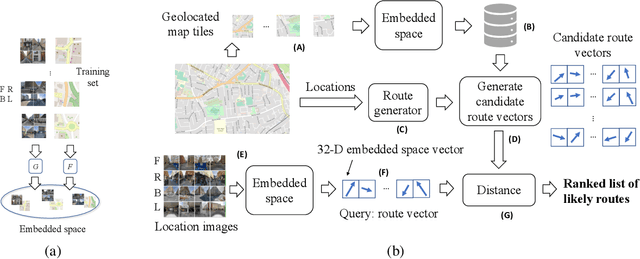Mengjie Zhou
Image-based Geolocalization by Ground-to-2.5D Map Matching
Aug 11, 2023Abstract:We study the image-based geolocalization problem that aims to locate ground-view query images on cartographic maps. Previous methods often utilize cross-view localization techniques to match ground-view query images with 2D maps. However, the performance of these methods is frequently unsatisfactory due to the significant cross-view appearance differences. In this paper, we extend cross-view matching to 2.5D spaces, where the heights of the structures - such as trees, buildings, and other objects - can provide additional information to guide the cross-view matching. We present a new approach to learning representative embeddings from multi-model data. Specifically, we first align 2D maps to ground-view panoramic images with polar transform to reduce the gap between panoramic images and maps. Then we leverage global fusion to fuse the multi-modal features from 2D and 2.5D maps to increase the distinctiveness of location embeddings. We construct the first large-scale ground-to-2.5D map geolocalization dataset to validate our method and facilitate the research. We test our learned embeddings on two popular localization approaches, i.e., single-image based localization, and route based localization. Extensive experiments demonstrate that our proposed method achieves significantly higher localization accuracy and faster convergence than previous 2D map-based approaches.
You Are Here: Geolocation by Embedding Maps and Images
Nov 20, 2019



Abstract:We present a novel approach to geolocating images on a 2-D map based on learning a low dimensional embedded space, which allows a comparison between an image captured at a location and local neighbourhoods of the map. The representation is not sufficiently discriminatory to allow localisation from a single image but when concatenated along a route, localisation converges quickly, with over 90% accuracy being achieved for routes up to 200m in length when using Google Street View and Open Street Map data. The approach generalises a previous fixed semantic feature based approach and achieves faster convergence and higher accuracy without the need for including turn information.
 Add to Chrome
Add to Chrome Add to Firefox
Add to Firefox Add to Edge
Add to Edge